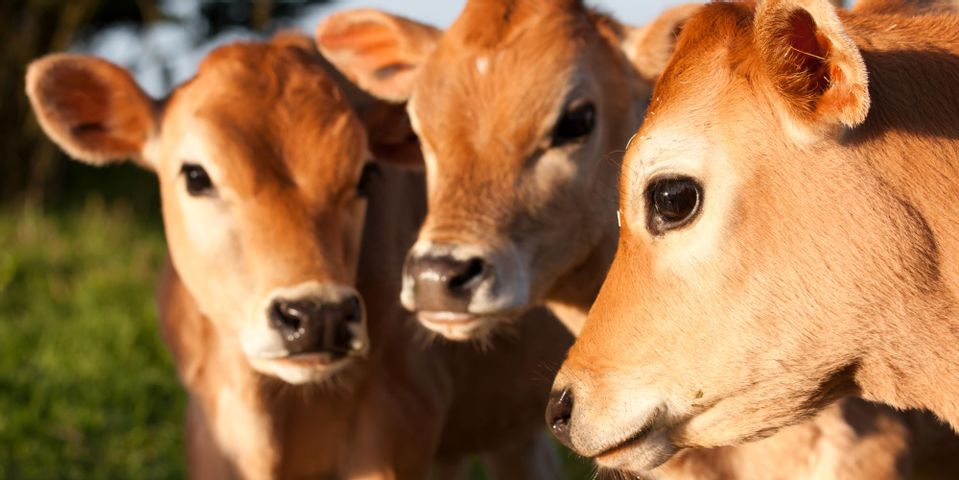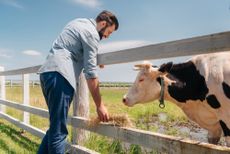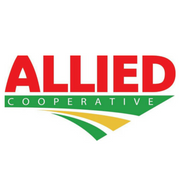
It’s easy to identify when calves are sick if they scour, become weak, develop drooping ears, sunken in eyes or pale gums from dehydration, or won’t feed from their mother. After seeing these signs, you should know what to do and what kind of bug you’re dealing with to help in treating and preventing infected animals. Let’s start by going through the most common sicknesses seen on farms.
How to Identify and Treat Scouring Calves
Crypto
Crypto is typically seen in calves from 1-4 weeks of age. The symptoms include watery scours and lethargic calves. Their manure may contain blood, mucus, undigested milk, or bile. Crypto invades the small intestine and damages the villi, which are responsible for absorbing the water and nutrients that the calf ingests.
Following infection, the calf cannot absorb nutrients or water, which causes scouring, and then lethargy. Calves will continue to shed crypto oocytes (eggs) for typically four days after being infected. Unfortunately, crypto is a protozoal organism, which is not killed by drugs, making supportive care for the calf the best option. Electrolytes containing an alkalizing agent should be given 3-4 times a day and is the best option to keep them hydrated.
The hydrating solution should be given two hours after a milk feeding if the calf continues to drink. Being that crypto is hard to eradicate once in barns, sanitation is the only option to prevent and treat infected areas. This will also help prevent secondary infections of Rotavirus and Coronavirus from starting.
Rotavirus
Rotavirus is usually seen in calves 5-14 days old. Symptoms are sluggishness, reluctancy to drink, and pale, yellow scours that can contain mucus or blood flecks. The scouring lasts around 4-8 days, causing dehydration and increasing the risk of picking up secondary infections.
The first option for supportive care is oral fluids; again, an electrolyte containing an alkalizing agent is recommended. If the calf can drink the electrolytes, then this is the preferred method. Tubing the electrolytes is an option, but there’s a risk of delayed absorption with the fluid staying in the rumen.
Intravenous fluids are recommended if the calf is collapsed and won’t stand up. Like Crypto, Rotavirus cannot be killed by antibiotics, but they help prevent secondary infections if the calf does not respond to oral fluid therapy. Methods for prevention are good hygiene and an adequate amount of quality colostrum administered to the calf. Some vaccines can be given to the healthy cow, which provides the calf with antibodies to help fight against Rotavirus, but consult your veterinarian on this.
The Coronavirus
The coronavirus can be seen in calves one week to three months old and can infect the digestive and upper respiratory systems. Visible symptoms are scours, weakness, decreased appetite, dehydration, fever, coughing, nasal discharge, and increased respiratory rate. The disease can either start in the nasal cavity, working its way down into the respiratory system, or the digestive tract. It has also been seen to start in the small intestine and move to the large intestine.
Treatment or supportive care is administering electrolytes with alkalizing agents to keep them hydrated until their immune system can fight off the virus. Prevention consists of sanitation in the calf containment area and maternity pens, and quality colostrum.
Salmonella
 Salmonella is seen in calf newborns up to 10 days old, but it can be seen in adult cows most commonly pre and post-calving. Symptoms are scours and a fever, along with diarrhea, which will have a strong odor and can contain fibrin or blood. The waste will possess a watery or mucus consistency. The calf can become severely dehydrated and die if supportive fluid therapy, such as electrolytes, are not given.
Salmonella is seen in calf newborns up to 10 days old, but it can be seen in adult cows most commonly pre and post-calving. Symptoms are scours and a fever, along with diarrhea, which will have a strong odor and can contain fibrin or blood. The waste will possess a watery or mucus consistency. The calf can become severely dehydrated and die if supportive fluid therapy, such as electrolytes, are not given.
Aggressive fluid therapy is the go-to option for treatment. A nonsteroidal inflammatory can also be administered to help with pain and increase appetite. If the septicemia develops, antibiotics can be given. Consult your veterinarian on the best option.
Sanitation is vital in the calf barn and maternity area, which will also reduce the risk of sick cows. Water troughs should also be disinfected, which is a common place for salmonella to reside.
Also, unpasteurized milk from fresh or hospital cows can help spread salmonella. Proper plate cleaning is critical in the pasteurizer. If the milk is pasteurized, the foam on the top should be heated to the desired temperature as the rest of the liquid.
Clostridium
 Clostridium is a bacterium that is commonly ingested in small amounts by the calf and then proliferates in their intestines. This is mostly seen in newborn calves to two months of age. Clostridium bacteria feed on starches and sugars in the calf’s abomasum. Therefore, this bacterium isn’t found in older animals because the rumen would digest these sugars and starches before getting to the abomasum.
Clostridium is a bacterium that is commonly ingested in small amounts by the calf and then proliferates in their intestines. This is mostly seen in newborn calves to two months of age. Clostridium bacteria feed on starches and sugars in the calf’s abomasum. Therefore, this bacterium isn’t found in older animals because the rumen would digest these sugars and starches before getting to the abomasum.
Causes of proliferation in calves are rapid feed changes, stress, nutritional deficiency, or a secondary infection. Once Clostridium is in the intestine, it secretes toxins, which can lead to shock, inflammation, or death. The disease cannot spread from calf to calf, but it’s common to see a group of sick calves due to similar nutrition management and exposure. Treatment is typically unsuccessful due to symptoms being caused by toxins already in the calf’s system.
Early detection is critical if antibiotics (penicillin) can treat the calf. Electrolytes, fluid therapy, and anti-inflammatory medication can also be given. Prevention is aided with proper colostrum quality and quantity (4 quarts), maternity area and feeding equipment sanitation, regular feeding times, properly mixed replacer, correct milk temperature, and sudden diet changes.
Coccidiosis
Coccidiosis targets calves around the age of 1 month to 1 year. Coccidia microbes are host specific, so only cattle coccidia bacteria can infect cattle. Symptoms are typically seen after a stressful event, such as a pen move, feed change, weather change, or unsanitary conditions. Symptoms are watery diarrhea with possible blood present, weight loss, straining, and rapid dehydration.
Luckily, treatment is fairly simple. Keep animals hydrated and provide the correct dosage of amprolium crumbles for the recommended amount of time. For prevention, focus on keeping stressful events to a minimum, reduce calf exposure to already infected areas, and a feed additive can be given (amprolium crumbles) on a preventative basis.
E. Coli
E. coli is seen in young calves usually from newborn to around 10 days, but it can even be seen up until three weeks. This is the most common bacteria source for causing scours, with symptoms including scours, which result in dehydration and a dull-looking calf. Electrolytes are recommended for treatment, or intravenous fluids can be given if the calf is extremely dehydrated and won’t get up. Prevention starts with a five-step sanitation procedure.
Five-Step Sanitation Protocol
Before starting sanitation, administer electrolytes containing bicarb are crucial to keeping calves hydrated (not all electrolytes are created equal), reduce stress, maintain the quality and quantity of colostrum, and look for early symptoms to return a calf to good health. To perform the proper sanitation procedure, follow these five steps:
- Using warm water, rinse feeding, and housing equipment of dirt, manure, and milk residue.
- Wash the equipment with a chlorinated alkaline detergent with a pH of 11-12. The equipment can also be placed in a dishwasher. However, bottle nipples should be hand washed.
- Rinse with cold water followed by a second rinse containing an acid (pH 2-3) and 50-ppm of chlorine dioxide solution. Some chlorine dioxide solutions include Oxine, Dutrion, Exspor, or Oxymer
- Allow the equipment to drain and dry. Avoid stacking buckets on floors since drying racks are more effective off the ground
- Wait 2 hours before spraying the feeding equipment with a 50-ppm chlorine dioxide solution
For further questions on troubleshooting calf scouring issues or selecting the right electrolytes, contact Allied Cooperative Nutrition Team at 800-247-5679 or consult your veterinarian.
About the Business
Have a question? Ask the experts!
Send your question

